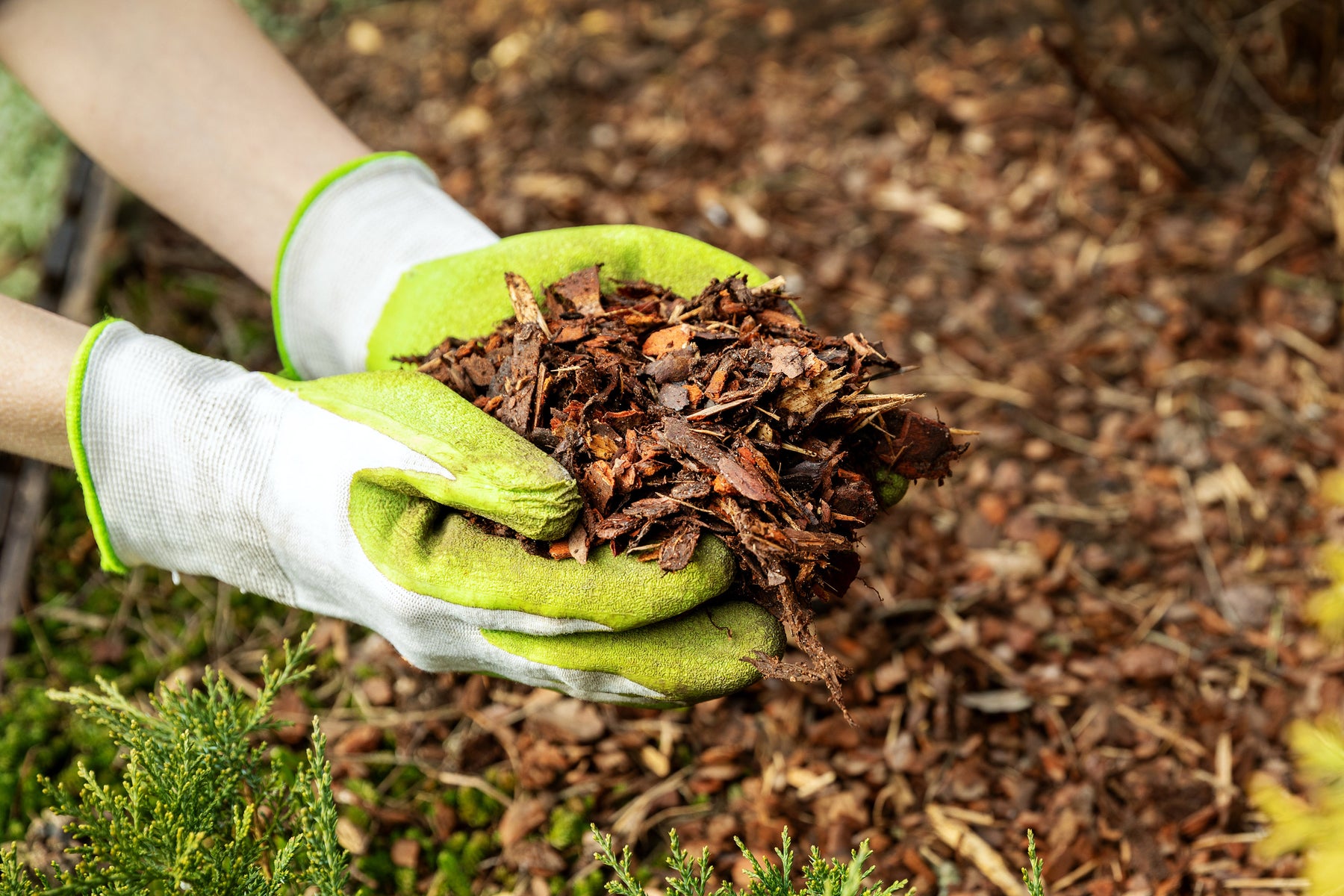Soil, Stones, Pavers & More
In No Mess Bulk Bags

Enhancing Your Garden with Mulch: The Ultimate Guide
Mulch is a gardening essential that can truly transform your outdoor space. Whether you're just starting out in the garden or a seasoned pro, mulch offers many benefits for your garden beds, plants, trees, and property. In this comprehensive guide, we'll explore the various types of mulch, their advantages, and how to make the most of this valuable resource in your garden.
The Benefits of Mulch in Your Garden
Mulch Bark: The Highest Quality Bark for Your Garden
When it comes to mulch, not all materials are created equal. Mulch bark, often available in the form of decorative bark or bark nuggets, is renowned for its ability to enhance your garden beds and landscape. Here's why mulch bark should be your top choice:
Weed Suppression: Mulch bark effectively suppresses weed growth in your garden, saving you time and effort in weed control. It inhibits their germination and growth by preventing sunlight from reaching weed seeds.
Soil Temperature Regulation: Mulch bark is a natural insulator for garden beds. It helps maintain a stable soil temperature, protecting plant roots from cold in the winter and extreme heat in the summer.
Moisture Retention: Mulch bark has fantastic moisture-retaining properties. It reduces water evaporation from the soil's surface, ensuring that your plants receive consistent moisture for healthy growth.
Aesthetic Appeal: Mulch bark, especially varieties like black mulch, enhances your garden's visual appeal. Its dark colour provides an attractive backdrop for your plants and flowers, making them stand out.
Nutrient-rich soil: As mulch bark breaks down over time, it enriches the soil with nutrients. This organic matter feeds your plants' roots and encourages robust growth.
Types of Mulch Bark for Your Garden
Exploring Your Mulch Options
Mulch bark comes in various forms, each with its unique advantages. Here's a brief overview of the most popular mulch bark types:
Decorative Bark: Perfect for enhancing the aesthetics of your garden, decorative bark adds a touch of elegance to your landscape. It's suitable for flower gardens and other areas where appearance matters.
Bark Nuggets: These larger pieces of mulch bark offer excellent weed suppression and moisture retention. They're a practical choice for larger garden beds and landscaping projects.
Natural Bark: If you're searching for a mulch bark that maintains a natural appearance while delivering all the benefits, natural bark is a suitable option. It offers quality and value for your gardening needs.
Black Mulch: For those looking to add a pop of colour to their garden, black mulch provides an interesting colour option to suit your garden's theme. It's a creative way to decorate your garden beds.
The Right Way to Apply Mulch Bark
Tips for Successful Mulching
To maximise the benefits of mulch bark in your garden, follow these essential tips for application:
Proper Thickness: Aim for a mulch bark layer with 2-4 inches thickness. This depth provides optimal weed suppression and moisture retention.
Keep mulch Away from Plant Stems: When applying mulch bark, ensure it doesn't come into direct contact with plant stems or tree trunks. Leave a small gap to prevent moisture-related issues.
Mulch for All Gardens: Whether you have flower gardens, vegetable gardens, or fruit gardens, mulch bark is a versatile choice that suits various garden types.
Regular Maintenance: To maintain the tidy appearance of your mulched garden and maximise its benefits, replenish mulch bark as needed to maintain the recommended thickness.
Frequently Asked Questions
Q1. What are the primary benefits of using mulch in landscaping?
Mulch offers several advantages, including weed suppression, temperature regulation, moisture retention, improved aesthetics, and nutrient enrichment for the soil.
Q2. How do I choose the right type of mulch for my specific landscaping needs?
Select mulch based on your garden's appearance, size, and plant types. Decorative bark, bark nuggets, natural bark and black mulch have unique benefits.
Q3. Is mulch environmentally friendly, and how can I practise sustainable mulching?
Mulch is eco-friendly when sourced responsibly. Sustainable mulching involves using natural or recycled materials, avoiding chemically treated options, and replenishing mulch to reduce waste.
Q4. What are some common maintenance tasks when using mulch in landscaping?
Routine maintenance includes checking mulch thickness, keeping it away from plant stems or tree trunks, and replenishing mulch as it naturally decomposes to maintain its benefits.
Embracing mulch as a landscaping tool can transform your outdoor spaces, making them beautiful, sustainable, and low-maintenance. By understanding the role of mulch in landscape design, choosing the right type and practising eco-friendly mulching, you can unlock the full potential of your home's outdoor areas. Whether you're creating an indoor-outdoor flow or enhancing your patios and decks, mulch is a versatile and environmentally responsible choice.
Ready to transform your outdoors with mulch? Contact Cubag today to explore your options and create the beautiful and sustainable landscape you've always wanted. With the right mulch, your landscaping dreams can become a reality.

Leave a comment